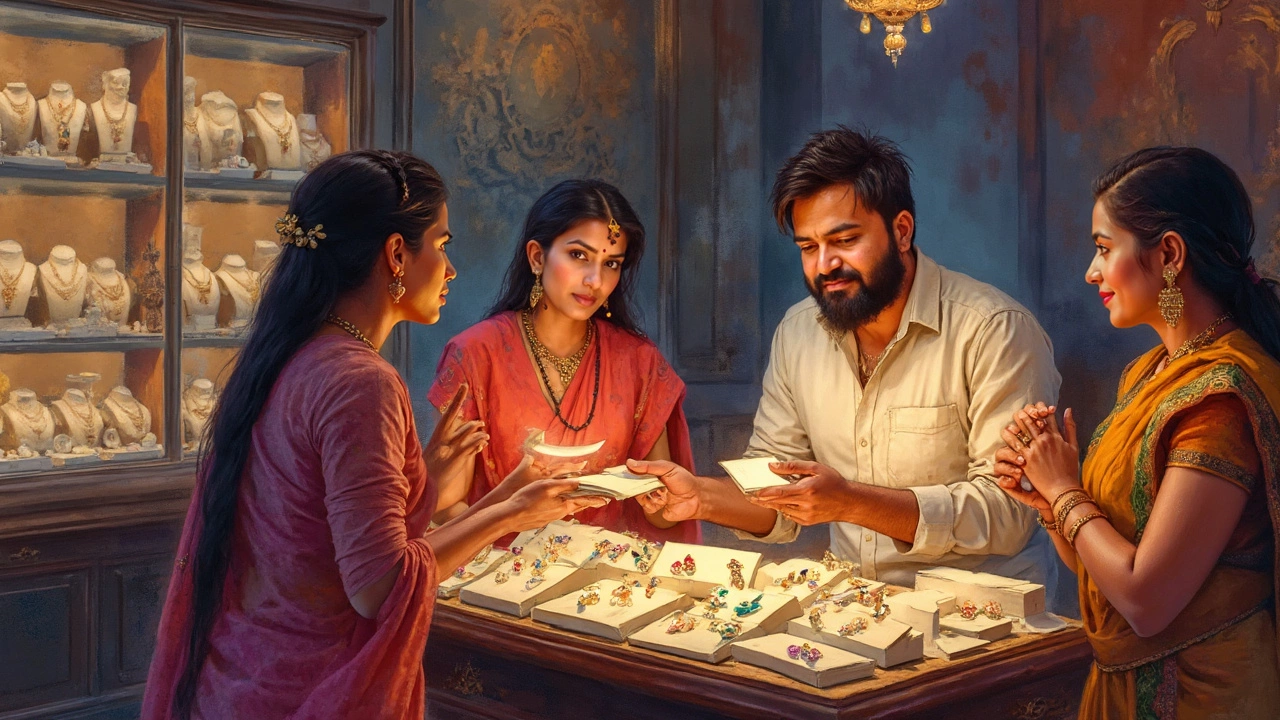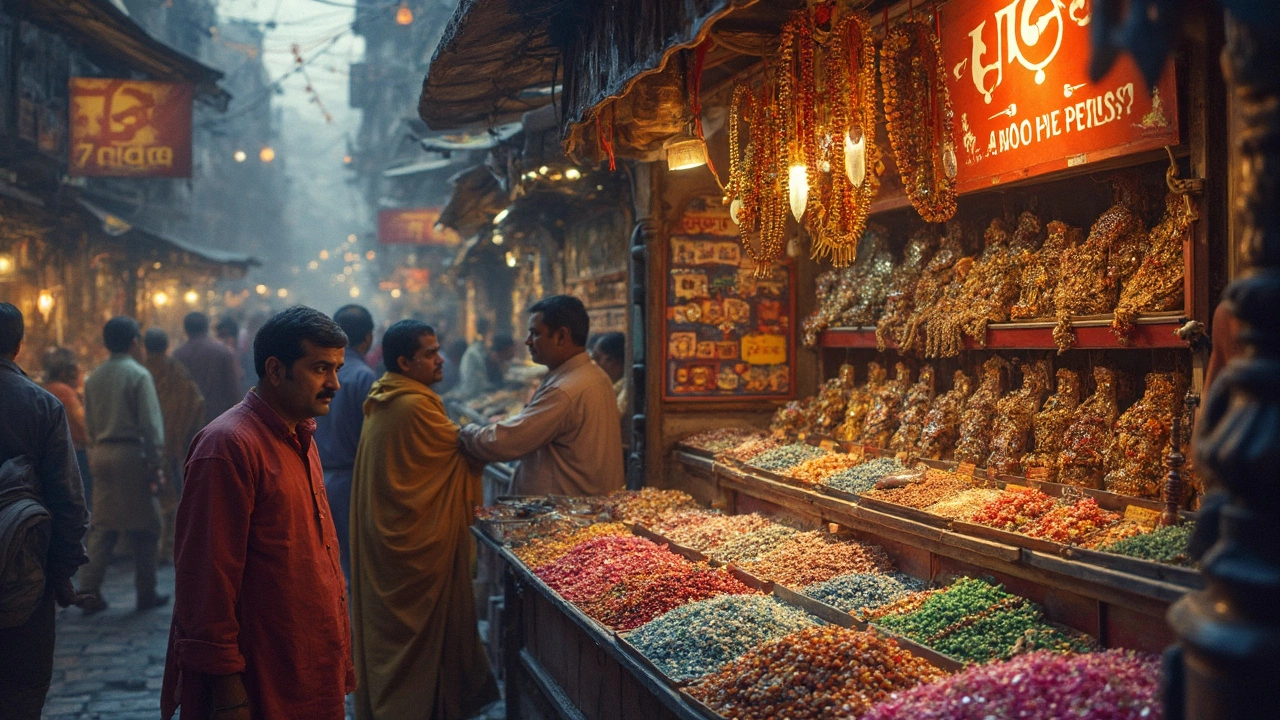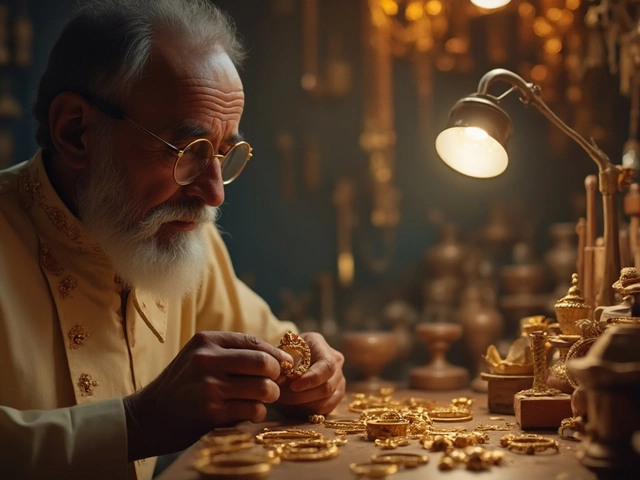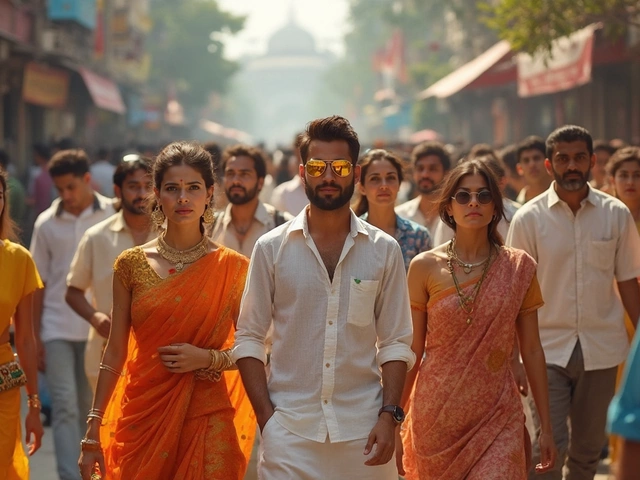Gemstones from India have fueled royal collections, Bollywood bling, and religious temple jewellery for centuries. But, let's be real—dodgy deals and fake stones float around just as much as those sparkling, genuine gems. If you're thinking of buying, especially online or while traveling, it's smart to ask: Is it safe?
India produces and trades a massive share of the world’s colored stones, especially for silver and gold temple jewellery. The sheer variety is amazing, from rubies in Jaipur to sapphires in Tamil Nadu. But not all sellers play fair. Stories pop up every season—travelers leaving Jaipur’s gemstone markets, only to find their ‘precious’ stone barely worth pocket change back home.
Before dropping your hard-earned cash, you need to know how to avoid getting ripped off and how to spot trustworthy sellers. Let’s dig into what makes India such a gemstone hotspot, the risks you actually face, and what you can do to come out with something real and beautiful.
- Why India Is a Gemstone Giant
- Common Traps and Scams
- How to Check for Authenticity
- Working with Trusted Sellers
- Tips for Safe Gemstone Buying
Why India Is a Gemstone Giant
There’s a reason you keep hearing about India when it comes to gemstones India—the country’s been at the center of this business for literal centuries. Markets in Jaipur, Delhi, and Mumbai aren’t just for locals; they ship stones everywhere, feeding both jewellery giants and tiny artisan shops. Jaipur alone is called the Gem City and churns out everything from affordable amethysts to high-end emeralds and sapphires.
India’s edge comes from two things: variety and skill. You can find stones from all over the world being cut, polished, and traded here. Local mines in states like Odisha and Karnataka pop out sapphires, garnets, and even diamonds, though a lot now gets imported for processing. The real magic is in the people who cut and polish these stones. Indian artisans have a reputation for slicing gems in ways that bring out top color and sparkle without wasting much material—that can bump up the stone’s value fast.
The temple jewellery scene also drives the demand. In South India, especially in Tamil Nadu and Kerala, you’ll see tons of shops specializing in gold and silver settings stacked with natural rubies, pearls, and unpolished gems. Many temples even commission custom pieces for rituals, keeping neighbourhood jewellers in business.
Having a mega distribution system helps a lot too. India is one of the world’s top exporters of colored stones, sending millions of carats to the US, Europe, and Southeast Asia. This setup means you get lots of choices and prices, from budget buys to luxury pieces, all on the same street.
So, whether you’re after a ruby for a wedding, gemstones for temple jewellery, or just something flashy for a party, India’s got both the supply and generations of expertise—pretty hard to beat, if you know what you’re looking for.
Common Traps and Scams
India’s markets are packed with gemstones, but there are also plenty of traps for buyers. The country is well-known for both authentic temple jewellery and some of the world’s trickiest gemstone scams. The most common one? Stones passed off as natural, when they’re actually synthetic or glass.
Here’s a reality check. According to a 2023 survey by India’s Gem & Jewellery Export Promotion Council, nearly 1 in 4 tourists buying loose stones in Rajasthan were sold treated or imitation gems at genuine prices. The difference is not always obvious, especially if you don’t have specialized tools.
- Bait-and-switch: Sellers show high-quality gems but swap in a cheaper stone when it’s time to pack your goods.
- Fake certificates: Some merchants hand you a “certificate of authenticity” that’s actually printed in the back of their shop.
- Glass and lab stones: Colored glass and lab-made stones often pose as real rubies, sapphires, or emeralds—sometimes you’ll even see plastic sold as semi-precious stones.
- “Mystic” upgrades: You’ll often hear claims that a cheap gem is 'blessed', 'rare', or 'suitable for temple jewellery', and that’s why it costs so much. Sellers play on buyers’ trust in spiritual value to charge sky-high prices for ordinary stones.
Here’s a quick comparison of what you might get versus what you think you’re buying:
| What Seller Claims | What You Might Get |
|---|---|
| Natural Sapphire | Lab-grown sapphire or colored glass |
| Certified Ruby | Dyed red quartz with a fake certificate |
| Antique Temple Jewellery Emerald | Green glass or synthetic spinel |
Don’t let anyone rush you. Most scams succeed because buyers feel pressure to make a fast decision. Slow down, ask questions, and always check the details. If someone refuses to answer or gets pushy, that’s a massive red flag.
The keyword here is gemstones India. It’s why so many buyers flock to Indian markets, but it’s also why scammers hang out nearby. When in doubt, remember: if the deal looks way too good or too spiritual to be true, it probably isn’t the real thing.

How to Check for Authenticity
If you don’t want fake stones in your temple jewellery, checking gemstone authenticity is a must. The truth? Even seasoned buyers slip up sometimes. Here’s how you can avoid wasting your money.
First up, certifications matter. Always ask the seller for a lab report from a recognized place like IGI (International Gemological Institute), GIA (Gemological Institute of America), or India’s own GII (Gemmological Institute of India). These labs use scientific tests, not just guesswork off a jeweler’s loupe. No certificate? Walk away.
Physical checks can save you from rookie mistakes. Hold the stone up—real gems usually have tiny inclusions or natural cracks. Perfectly clear stones that look too flawless are likely glass or lab-made. While you’re at it, check the weight. Real gemstones feel heavier than fakes of the same size. Another quick DIY test: rub the stone gently against a hard surface like glass. Most real gems won’t scratch, but glass imitations will.
- gemstones India often come with regional styles. Know what you’re buying: for example, Jaipur is famous for colored stones, while Chennai deals more in pearls and diamonds.
- Ask to see several stones and compare. If the shopkeeper tries to rush you or refuses, that’s a red flag.
If you’re in a shop and still not sure, see if the seller allows third-party verification. Honest dealers won’t mind if you want a local lab to check the stone before you buy. Online? Only buy from sellers who show actual certificates, not just pretty pictures. Double-check the certificate number on the lab’s website to confirm it’s legit.
Finally, don’t let glossy shop fronts fool you. Even in big Indian markets, flashy stores sometimes sell fake stuff. Stay curious, take your time, and trust your gut if something feels off.
Working with Trusted Sellers
The biggest game-changer when buying gemstones from India? Finding a seller you can actually trust. There are huge, well-known markets like Jaipur’s Johari Bazaar and Chennai’s Burma Bazaar where shops range from family-run legends to random pop-ups. The problem is, even next door to a well-known brand, you’ll find folks selling fakes. So, how do you cut through the noise?
- Check if the seller has retail shop licences or is a registered exporter. Major cities like Mumbai and Jaipur have detailed online directories for this—don’t be shy to ask for their credentials.
- Ask for gem lab certifications. Reputable Indian sellers usually provide certificates from labs like IGI (International Gemological Institute India), GIA (Gemological Institute of America India), or GJEPC (Gem & Jewellery Export Promotion Council). Avoid any seller who hesitates here.
- Look for clear return policies. Trustworthy stores will usually accept returns (with terms, of course). No return? That’s a red flag.
- Browse customer reviews on Google Maps, Trustpilot, or even YouTube walk-throughs of the shop. Don’t settle for testimonials on their own website—they curate those.
Here’s some solid data worth knowing. According to a 2023 GJEPC report, over 60% of India’s gemstone exports are handled by certified sellers who comply with international trading standards. But informal surveys show that almost 35% of retail marketplace shops offer stones without third-party certification—so the risk is real.
| Fact | Why it Matters |
|---|---|
| Shop displays GIA or IGI certificate | Backed by global labs; minimizes fakes |
| Return policy available | Boosts buyer confidence; accountability |
| Online reviews (multiple sites) | Shows customer experiences; flags scams |
| Registered with GJEPC | Recognized by Indian authorities |
The bottom line? Don’t rush just because a seller is friendly, offers you tea, or reels you in with a "lucky price." Take your time, ask questions about certifications, and use your phone to check on the spot. When you’re dealing with something as valuable as gemstones India is famous for, it pays to go slow and check every detail.

Tips for Safe Gemstone Buying
Alright, if you want your gemstone haul to be a win, there are a few ground rules you just shouldn’t skip. India’s markets and websites might tempt you with killer deals, but smart buyers play it safe and pay attention to the details.
The first move? Always ask for a gem certificate—ideally from a trusted lab like GIA (Gemological Institute of America), IGI (International Gemological Institute), or BIS (Bureau of Indian Standards). These labs test stones for authenticity and quality, and their documents aren’t just decoration. In fact, a 2022 IGI survey reported that nearly half of the "rubies" checked in Indian tourist shops actually turned out to be low-grade garnets or glass.
Don’t be shy about checking reviews. The good sellers know that trust sells, so legitimate shops often show off customer feedback and proof of past sales. Steer clear of anyone who dodges your questions or can’t give straight answers about what you’re buying.
"Never buy expensive gemstones just by looking at them. Make sure you get a lab report and, if possible, a second opinion from an independent expert." — GIA India Spokesperson, 2023
Here are a few more tips to make sure your gemstone shopping in India stays stress-free:
- Gemstones India has a massive range, so take your time to research the species (like ruby, emerald, sapphire) and learn what they should look like. Compare prices—if it sounds too cheap, it probably is.
- Get everything in writing, including stone specs, carat weight, and return policy. Paperwork is your friend.
- Stick to established stores, especially those that serve locals as well as tourists. Pop-up shops and street vendors can be risky.
- Use a jeweler's loupe (ask for one in-store if you don't have your own). Obvious bubbles, strange colors, or scratches are warning signs of a fake or poor-quality stone.
- If you’re buying for a religious purpose—like temple jewellery—check for authentic sources used by local temples or famous jewellers with a long reputation.
To show just how different gemstone authenticity in India can be, check out this quick table:
| Buying Source | % Risk of Fake (Est.) | Offers Certification? |
|---|---|---|
| Reputable Jeweler (Urban) | 5-10% | Usually yes |
| Online Marketplace | 20-35% | Sometimes |
| Street Market/Vendor | 50-60% | Rarely |
If you follow these steps, you’ll avoid most of the common headaches and make your gemstone search in India way safer—and ultimately, way more satisfying.



